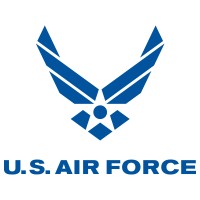
United States Air Force Company Cyber Security Posture
airforce.comThe mission of the United States Air Force is to fly, fight and win … in air, space and cyberspace. To achieve that mission, the Air Force has a vision of Global Vigilance, Reach and Power. That vision orbits around three core competencies: developing Airmen, technology to war fighting and integrating operations. These core competencies make our six distinctive capabilities possible. Air and Space Superiority: With it, joint forces can dominate enemy operations in all dimensions: land, sea, air and space. Global Attack: Because of technological advances, the Air Force can attack anywhere, anytime and do so quickly and with greater precision than ever before. Rapid Global Mobility: Being able to respond quickly and decisively anywhere we're needed is key to maintaining rapid global mobility. Precision Engagement: The essence lies in the ability to apply selective force against specific targets because the nature and variety of future contingencies demand both precise and reliable use of military power with minimal risk and collateral damage. Information Superiority: The ability of joint force commanders to keep pace with information and incorporate it into a campaign plan is crucial. Agile Combat Support: Deployment and sustainment are keys to successful operations and cannot be separated. Agile combat support applies to all forces, from those permanently based to contingency buildups to expeditionary
USAF Company Details
united-states-air-force
247906 employees
747579.0
336
Defense and Space Manufacturing
airforce.com
Scan still pending
UNI_2710140
In-progress
Between 900 and 1000
This score is AI-generated and less favored by cyber insurers, who prefer the TPRM score.
 USAF Global Score
USAF Global Score.png)

United States Air Force Company Scoring based on AI Models
| Model Name | Date | Description | Current Score Difference | Score |
|---|---|---|---|---|
| AVERAGE-Industry | 03-12-2025 | This score represents the average cybersecurity rating of companies already scanned within the same industry. It provides a benchmark to compare an individual company's security posture against its industry peers. | N/A | Between 900 and 1000 |
United States Air Force Company Cyber Security News & History
| Entity | Type | Severity | Impact | Seen | Url ID | Details | View |
|---|---|---|---|---|---|---|---|
| United States Air Force | Data Leak | 85 | 3 | 03/2017 | UNI01829722 | Link | |
Rankiteo Explanation : Attack with significant impact with internal employee data leaksDescription: Thousands of US Air Force records, including highly private personnel data on senior and high-ranking commanders exposed due to an unprotected backup disc. The compromised data includes personal information, such as names and addresses, ranks, and Social Security numbers of more than 4,000 officers. Another file lists the security clearance levels of hundreds of other officers, some of whom possess "top secret" clearance, and access to the sensitive compartmented information and codeword-level clearance. The internet-connected backup drive's lack of a password made the gigabytes of files accessible to everyone, according to security researchers. | |||||||
| U.S. Air Force | Cyber Attack | 100 | 6/2025 | UNI526062525 | Link | ||
Rankiteo Explanation : Attack threatening the organization's existence: Attack which stop a factoryDescription: The U.S. Air Force experienced significant disruption due to coordinated DDoS attacks orchestrated by pro-Iranian hacktivist groups following geopolitical tensions. These attacks, executed by groups like Mr Hamza and Keymous+, targeted military domains and resulted in sustained downtime over 10-hour periods. The Department of Homeland Security issued warnings about potential low-level and sophisticated attacks, highlighting the persistent threat to national cybersecurity infrastructure. | |||||||
United States Air Force Company Subsidiaries

The mission of the United States Air Force is to fly, fight and win … in air, space and cyberspace. To achieve that mission, the Air Force has a vision of Global Vigilance, Reach and Power. That vision orbits around three core competencies: developing Airmen, technology to war fighting and integrating operations. These core competencies make our six distinctive capabilities possible. Air and Space Superiority: With it, joint forces can dominate enemy operations in all dimensions: land, sea, air and space. Global Attack: Because of technological advances, the Air Force can attack anywhere, anytime and do so quickly and with greater precision than ever before. Rapid Global Mobility: Being able to respond quickly and decisively anywhere we're needed is key to maintaining rapid global mobility. Precision Engagement: The essence lies in the ability to apply selective force against specific targets because the nature and variety of future contingencies demand both precise and reliable use of military power with minimal risk and collateral damage. Information Superiority: The ability of joint force commanders to keep pace with information and incorporate it into a campaign plan is crucial. Agile Combat Support: Deployment and sustainment are keys to successful operations and cannot be separated. Agile combat support applies to all forces, from those permanently based to contingency buildups to expeditionary
Access Data Using Our API

Get company history
.png)
USAF Cyber Security News
Academy professor shapes tomorrow’s cyber leaders
Dr. Shannon Beck, Department of Computer and Cyber Sciences assistant professor, is a key leader in shaping the future of cadets at the US Air Force Academy.
Free Cybersecurity Classes for Students and Adults at the National Museum of the U.S. Air Force
CyberPatriot is the National Youth Cyber Education Program created by the Air & Space Forces Association to inspire K–12 students toward careers ...
Control Systems Security Specialist Training: Strengthening our Critical Systems
The new control systems security specialist course is designed to train experts to secure these valuable cyber systems. This course is the first ...
US Air Force Opens Cyber Training Complex in Colorado
The US Air Force Academy has launched a training facility in Colorado to sharpen the skills of current and future tactical cyber experts.
West Virginia Guard Joins Cyber Defense Training in Qatar
The West Virginia National Guard Cyber Protection Team - Mission Element joined over 30 cyber operators from six nations in the multinational exercise Eagle ...
BigBear.ai, Proof Labs Collaborate on AI-Powered Cybersecurity Solution for U.S. Air Force
BigBear.ai, a leading provider of AI-powered decision intelligence solutions for defense and national security, today announced a collaboration with Proof ...
Cyber Command Chief Discusses Challenges of Getting Intel to Users
Cyber Command Chief Discusses Challenges of Getting Intel to Users ... The United States has spent trillions of dollars on ensuring intelligence ...
QuSecure Awarded Follow-On U.S. Air Force Contract for Post-Quantum Cybersecurity Solutions to Strengthen National Defense
QuSecure was awarded a contract to develop quantum-resilient encryption solutions for the Department of the Air Force.
My Journey From the Air Force to Cybersecurity
I highly encourage anyone transitioning out of the military and looking for a mission-driven line of work to explore the cybersecurity field.

USAF Similar Companies
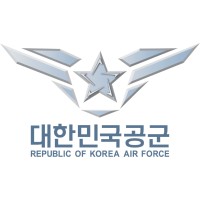
Republic of Korea Air Force
The Republic of Korea Air Force (ROKAF; Korean: 대한민국 공군; Hanja: 大韓民國 空軍; Revised Romanization: Daehanminguk Gong-gun), also known as the ROK Air Force, is the aerial warfare service branch of South Korea, operating under the South Korean Ministry of National Defense. The ROKAF has about 450 combat
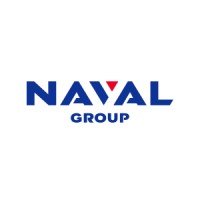
NAVAL GROUP
Naval Group is a partner to its customers' maritime sovereignty. An international player in naval defence and heir to French naval know-how, Naval Group develops innovative solutions to meet the needs of navies. Present throughout the entire life cycle of the ships, the group designs, builds, integr
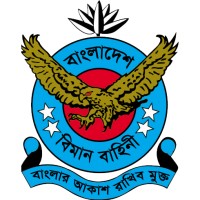
Bangladesh Air Force
The Bangladesh Air Force (Bangladesh Biman Bahini in Bangla), is the air arm of the Bangladesh Armed Forces. The embryo of Bangladesh Air Force (BAF) was formed on 28 September 1971 during the war of Liberation with only three aircraft. During last 43 years Bangladesh Air Force (BAF) has been develo
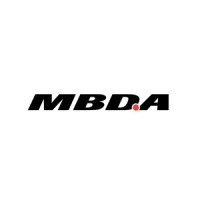
MBDA
A world leader in missiles and missile systems. Our multi-national organisation is made up of around 13,000 employees working across the UK, France, Italy, Germany, Spain and the US, and is the first truly integrated European defence company. As the European champion in our sector, our vision is

UK Ministry of Defence
We protect the security, independence and interests of the United Kingdom at home and abroad. We work with our allies and partners whenever possible. Our aim is to ensure that the UK’s Armed Forces have the training, equipment and support necessary for their work, and that we keep within budget.

BAE Systems
At BAE Systems, we help our customers to stay a step ahead when protecting people and national security, critical infrastructure and vital information. We provide some of the world’s most advanced, technology-led defence, aerospace and security solutions and employ a skilled workforce of 107,000 peo

Frequently Asked Questions
Explore insights on cybersecurity incidents, risk posture, and Rankiteo's assessments.
USAF CyberSecurity History Information
How many cyber incidents has USAF faced?
Total Incidents: According to Rankiteo, USAF has faced 2 incidents in the past.
What types of cybersecurity incidents have occurred at USAF?
Incident Types: The types of cybersecurity incidents that have occurred incidents Data Leak and Cyber Attack.
Incident Details
Can you provide details on each incident?

Incident : DDoS Attack
Title: Coordinated DDoS Attacks by Pro-Iranian Hacktivist Groups
Description: Multiple pro-Iranian hacktivist groups launched coordinated distributed denial-of-service (DDoS) attacks against American military domains, aerospace companies, and financial institutions following U.S. airstrikes on Iranian nuclear facilities on June 21, 2025.
Date Detected: 2025-06-21
Date Publicly Disclosed: 2025-06-22
Type: DDoS Attack
Attack Vector: Volumetric DDoS Attacks
Threat Actor: Mr Hamza, Team 313, Cyber Jihad Movement, Keymous+
Motivation: Geopolitical retaliation and disruption

Incident : Data Breach
Title: US Air Force Data Exposure
Description: Thousands of US Air Force records, including highly private personnel data on senior and high-ranking commanders, were exposed due to an unprotected backup disc.
Type: Data Breach
Attack Vector: Unprotected Backup Drive
Vulnerability Exploited: Lack of Password Protection
What are the most common types of attacks the company has faced?
Common Attack Types: The most common types of attacks the company has faced is Data Leak.
Impact of the Incidents
What was the impact of each incident?

Incident : DDoS Attack UNI526062525
Systems Affected: U.S. Air Force domains, Aerospace and defense contractors, Banking institutions
Downtime: Sustained 10-hour periods on June 22 (Mr Hamza), Concentrated one-hour periods (Keymous+)
Operational Impact: Service unavailability

Incident : Data Breach UNI01829722
Data Compromised: Personal Information, Ranks, Social Security Numbers, Security Clearance Levels
What types of data are most commonly compromised in incidents?
Commonly Compromised Data Types: The types of data most commonly compromised in incidents are Personal Information, Social Security Numbers and Security Clearance Levels.
Which entities were affected by each incident?

Incident : DDoS Attack UNI526062525
Entity Type: ['Military', 'Aerospace', 'Financial']
Industry: ['Defense', 'Aerospace', 'Finance']
Location: United States
Data Breach Information
What type of data was compromised in each breach?

Incident : Data Breach UNI01829722
Type of Data Compromised: Personal Information, Social Security Numbers, Security Clearance Levels
Number of Records Exposed: 4000
Sensitivity of Data: High
Personally Identifiable Information: True
References
Where can I find more information about each incident?

Incident : DDoS Attack UNI526062525
Source: Cyble
Where can stakeholders find additional resources on cybersecurity best practices?
Additional Resources: Stakeholders can find additional resources on cybersecurity best practices at and Source: Cyble.
Additional Questions
General Information
Who was the attacking group in the last incident?
Last Attacking Group: The attacking group in the last incident were an Mr Hamza, Team 313, Cyber Jihad Movement and Keymous+.
Incident Details
What was the most recent incident detected?
Most Recent Incident Detected: The most recent incident detected was on 2025-06-21.
What was the most recent incident publicly disclosed?
Most Recent Incident Publicly Disclosed: The most recent incident publicly disclosed was on 2025-06-22.
Impact of the Incidents
What was the most significant data compromised in an incident?
Most Significant Data Compromised: The most significant data compromised in an incident were Personal Information, Ranks, Social Security Numbers and Security Clearance Levels.
What was the most significant system affected in an incident?
Most Significant System Affected: The most significant system affected in an incident were U.S. Air Force domains, Aerospace and defense contractors, Banking institutions.
Data Breach Information
What was the most sensitive data compromised in a breach?
Most Sensitive Data Compromised: The most sensitive data compromised in a breach were Personal Information, Ranks, Social Security Numbers and Security Clearance Levels.
What was the number of records exposed in the most significant breach?
Number of Records Exposed in Most Significant Breach: The number of records exposed in the most significant breach was 400.0.
References
What is the most recent source of information about an incident?
Most Recent Source: The most recent source of information about an incident is Cyble.
What Do We Measure?
















Every week, Rankiteo analyzes billions of signals to give organizations a sharper, faster view of emerging risks. With deeper, more actionable intelligence at their fingertips, security teams can outpace threat actors, respond instantly to Zero-Day attacks, and dramatically shrink their risk exposure window.
These are some of the factors we use to calculate the overall score:
Identify exposed access points, detect misconfigured SSL certificates, and uncover vulnerabilities across the network infrastructure.
Gain visibility into the software components used within an organization to detect vulnerabilities, manage risk, and ensure supply chain security.
Monitor and manage all IT assets and their configurations to ensure accurate, real-time visibility across the company's technology environment.
Leverage real-time insights on active threats, malware campaigns, and emerging vulnerabilities to proactively defend against evolving cyberattacks.




